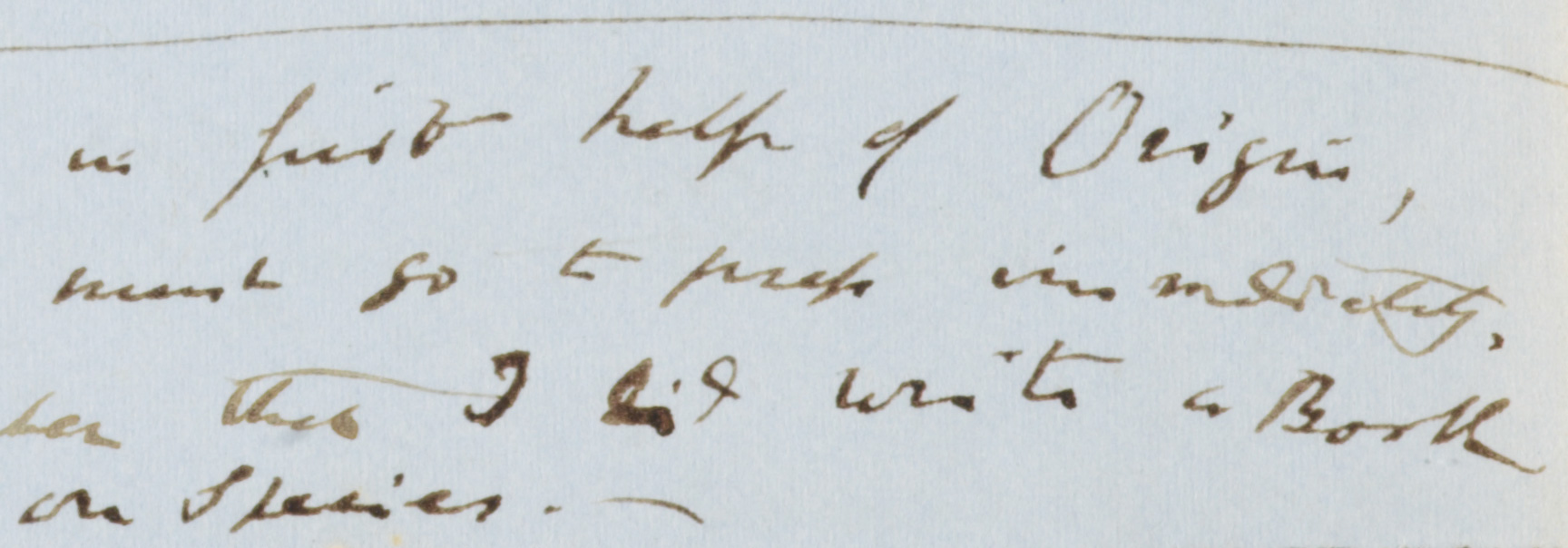Origin is 157 years old. (Probably) the most famous book in science was published on 24 November 1859. To celebrate we have uploaded hundreds of new images of letters, bringing the total number you can look at here to over 9000 representing more than 2000 letters, written both before and after the book appeared. You can now see examples of letters to Darwin from nearly 250 different people, and letters he wrote to 150 more.
There are letters from the key players in the drama surrounding Origin's publication: Alfred Russel Wallace, co-discoverer of natural selection; Charles Lyell, and Joseph Hooker, the two men who arranged for Darwin's and Wallace's ideas to be made public at the same time; the American botanist Asa Gray who was an important sounding board for Darwin's emerging ideas, and Thomas Huxley who became Origin's best known defender. Most of the letters from Wallace are after Origin's appearance, but there is a fascinating scrap from 1857 comparing his views on species to Darwin's. Others, like Hugh Falconer, couldn't wait to buy 'the wicked book'.
Closer and closer it held the poor fly in its embrace, until it ceased its struggles
Among the less well-known scientific collaborators who became Darwin's correspondents, Mary Treat, an American naturalist, discussed her research findings with Darwin, Roland Trimen sent him observations from South Africa, and the Scottish gardener John Scott conducted experiments in Edinburgh and then Calcutta. There are letters to the pigeon-breeder, William Tegetmeier and the nurseryman Thomas Rivers.
you see that I treat you as my geologist in chief for N. Wales.
And there are many letters from family and friends, including letters between Charles and his wife Emma, and several of their children: William, George, Henrietta, Francis, Leonard, and Horace. Francis's fiancée, Amy Ruck, was co-opted as an observer in Wales. Lucy Wedgwood, Darwin's neice, was one of those who (among other things) peered into wormholes for him; his cousin Hensleigh Wedgwood wrote about a violent shower of fish, but also about the origins of language. John Brodie Innes, vicar of the Darwins' parish of Down in Kent, and a lifelong friend of both Charles and Emma, sent information on pigeons mixed in with Parish affairs.
William Darwin Fox, Charles's cousin and another friend, compared notes on the efficacy of cold showers, but also forwarded information on breeding peas; and Bartholomew James Sulivan, Lieutenant on HMS Beagle, sent a cross-section of fossil-bearing strata from Patagonia.
Here are some of the other names to look for:
- Daniel Oliver
- W. T. Thiselton-Dyer
- George Cupples
- H. C. Watson
- J. J. Weir
- H. W. Bates
- Hensleigh Wedgwood
- J. S. Henslow
- C. S. Bate
- F. J. Cohn
- Winwood Reade
- S. H. Vines
- George Waterhouse
- Edward Blyth
- J. V. Carus
- William Kemp
- Alfred Newton
- Frederick Smith
- A. G. Butler
- John Lubbock
- R. I. Lynch
- J. B. Burdon Sanderson
- T. V. Wollaston



